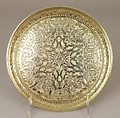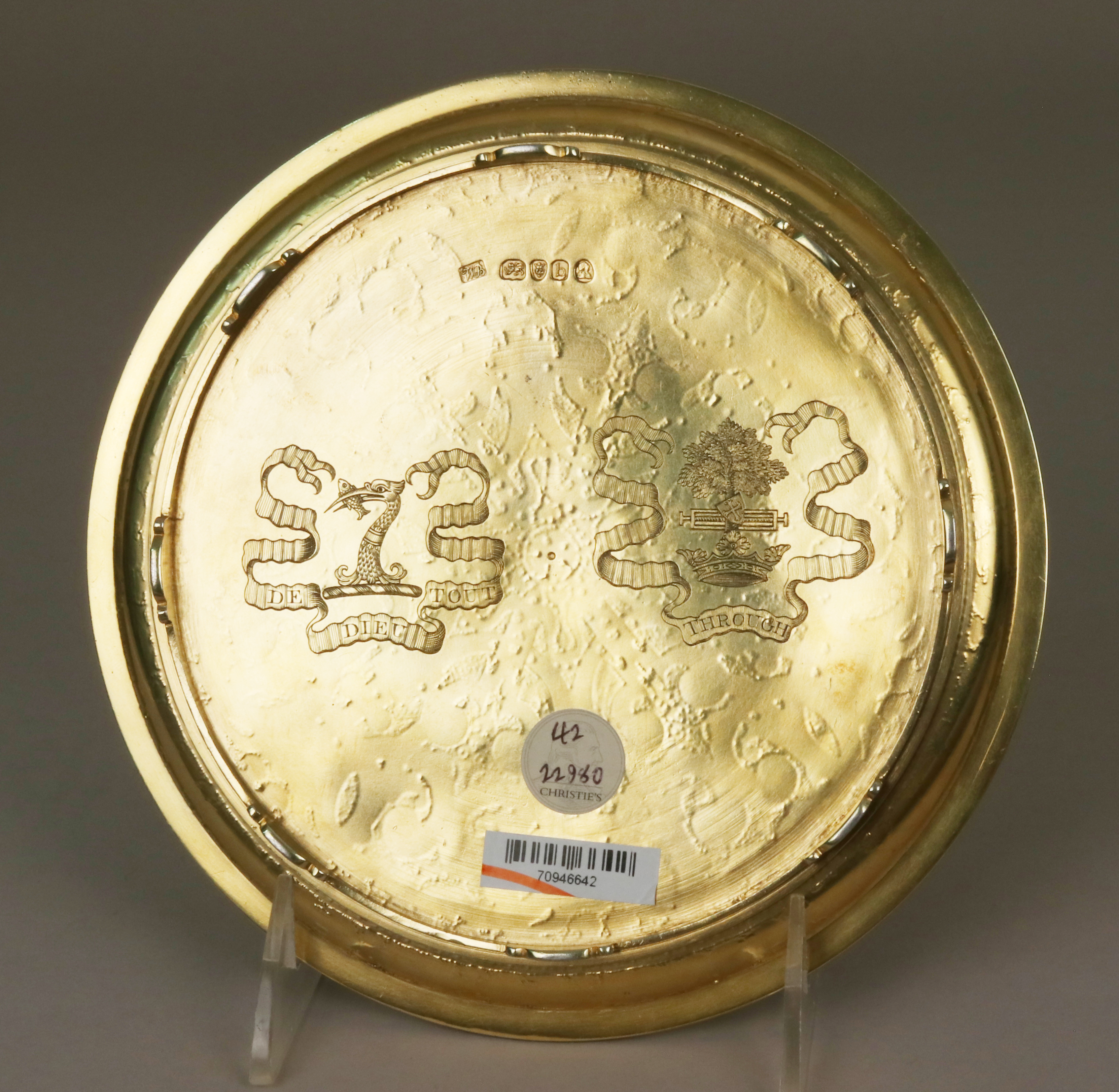Waiter (one of a pair)
William Burwash British
This highly imaginative pair of silver-gilt waiters ranks amongst the most unusual silver commissions by the eccentric collector and antiquarian William Beckford and is unique amongst the silver productions of Regency England. Deeply etched, chased, and engraved, their radiating design of arabesque strapwork in the Renaissance manner combines Islamic and Chinese motifs, thus anticipating the Eclecticism of the Victorians by several decades.
William Beckford was a superlative patron of the arts in England, in the first half of the 19th century. A novelist, aesthete and grand tourist, his keen interest in the arts benefited enormously from his vast family fortune, which he inherited at the tender age of 10. His father, Jamaican-born sugar planter Alderman William Beckford had twice been Lord Mayor of London (in 1762 and 1769) and his great-grandfather Colonel Peter Beckford had been Governor of the Colony of Jamaica, from where the majority the Beckford family’s wealth derived.
The pair of dishes of highly usual design were made by William Burwash, a Regency silversmith, who started out his professional trajectory as a watchcase maker. This type of dish, known as a waiter (small trays on feet but without handles), was used to serve food or drink, or to present letters or visiting cards.
Hallmarks on both waiters: WB [William Burwash]; lion passant [silver standard mark]; the crowned leopard for the London Assay Office [city mark]; b [1817]; profile of George III [duty mark].
Due to rights restrictions, this image cannot be enlarged, viewed at full screen, or downloaded.
This artwork is meant to be viewed from right to left. Scroll left to view more.



